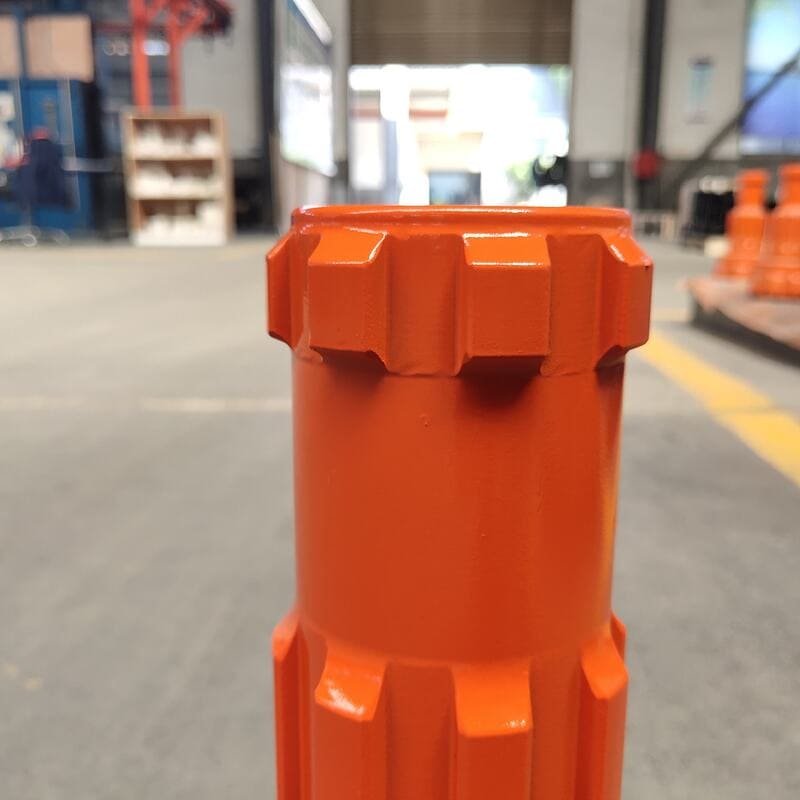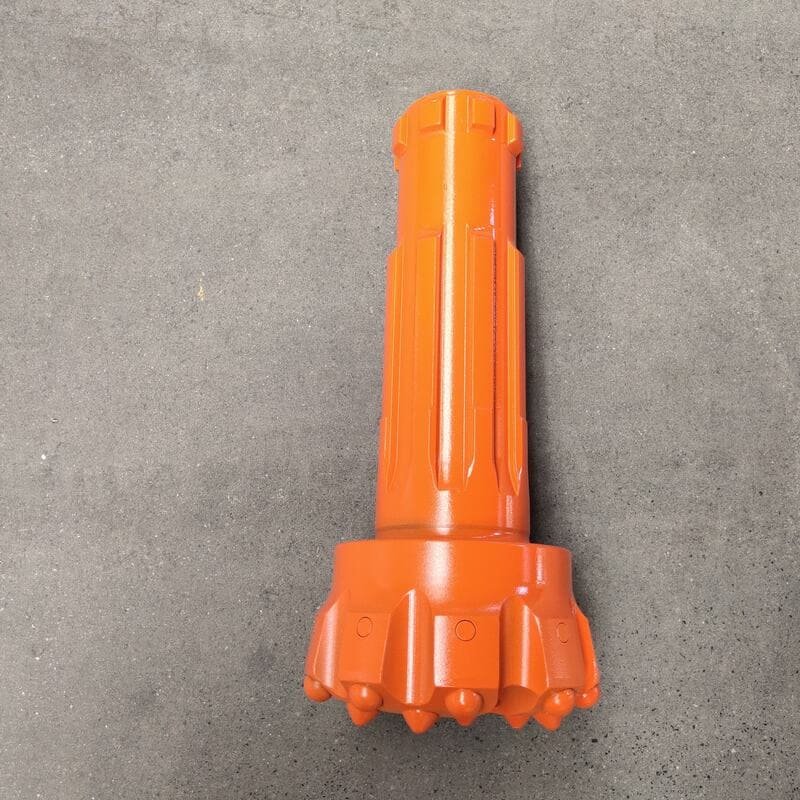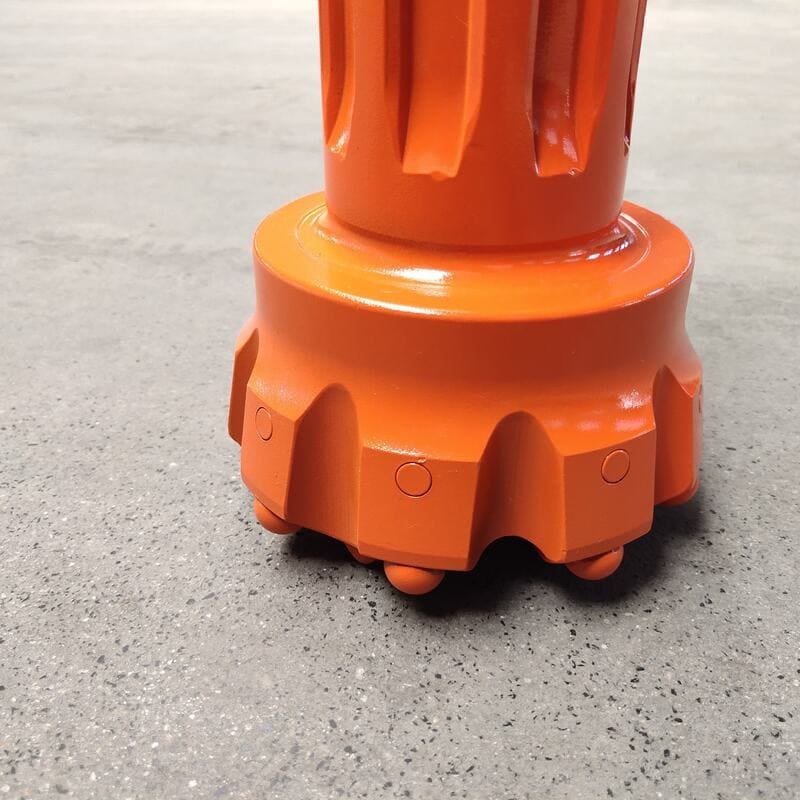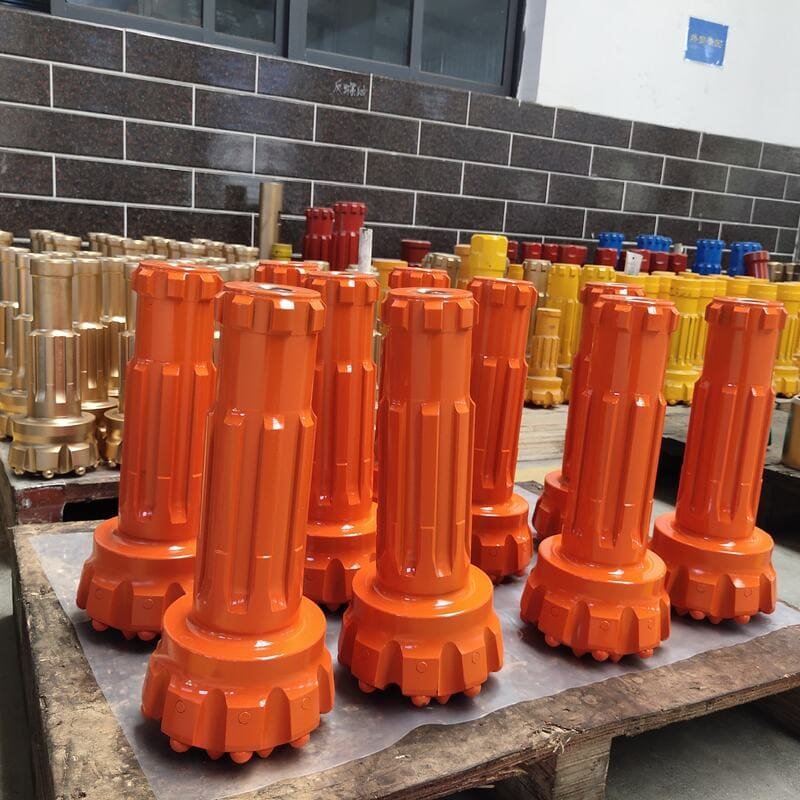In the thrilling world of drilling, where every millimeter counts, DTH bits are the uncelebrated champions ensuring smooth operations.
Dimensional inspection of DTH bits is crucial for guaranteeing they meet precise specifications, align perfectly with drilling equipment, and withstand operational stress. This inspection prevents performance issues, equipment damage, and potential safety hazards, ensuring a seamless drilling experience.
I remember my first project where a seemingly minor oversight in dimensional inspection led to a massive setback. The bit didn't fit the hammer correctly, causing unexpected downtime. That's when I truly understood the hidden power of precision. Beyond ensuring a proper fit, dimensional inspection prevents costly mistakes and enhances performance. Let's explore why this meticulous process is an absolute necessity for DTH bits.
Dimensional inspection prevents DTH bit performance issues.True
Inspection ensures bits meet specifications, avoiding performance failures.
Skipping inspection increases safety hazards in drilling.True
Neglecting inspection can lead to equipment failure, posing safety risks.
Why is Dimensional Accuracy Crucial for DTH Bit Performance?
Ever had a project where even the tiniest detail mattered? That's how I feel about dimensional accuracy in DTH drill bits.
Dimensional accuracy in DTH drill bits ensures they perfectly integrate with drilling equipment, boosting performance and minimizing downtime. Precise measurements maintain structural integrity, prevent jamming, and reduce wear and tear.

The Importance of Fit and Assembly
I remember the time when an incorrectly sized drill bit almost brought an entire project to a halt. Dimensional accuracy ensures that DTH drill bits fit seamlessly into the DTH hammer and drill string1. A perfect fit means fewer chances of damage or inefficiencies in power transmission. Poorly fitting bits can lead to thread disconnections2 or misalignments, which are nightmares on-site.
Ensuring Optimal Drilling Performance
Accuracy in dimensions influences the drilled hole's diameter, something I learned the hard way on a time-sensitive project. It's crucial that a bit's diameter stays within specified tolerances to meet project demands. Moreover, the layout of carbide buttons, dictated by these precise measurements, determines rock-breaking efficiency and penetration rates. Accurate button layouts can significantly enhance rock fracturing capabilities3.
Preventing Equipment Damage and Downtime
I've seen operations grind to a halt due to jamming, which is why dimensional precision is vital. Correct gauge and back clearance dimensions prevent bits from getting stuck, avoiding costly downtimes. A well-dimensioned bit distributes drilling stresses evenly, which reduces wear and prolongs its lifespan—a lesson learned from replacing bits more often than necessary.
Maintaining Safety Standards
Regular dimensional inspections are part of my routine to ensure drill bits remain defect-free, maintaining their structural integrity under stress. This is particularly important in industries where drill bit reliability4 is critical for safety and efficiency. Ensuring accurate dimensions also means staying compliant with industry standards, which supports interoperability across different equipment brands.
| Dimensional Aspect | Impact on Performance |
|---|---|
| Thread Accuracy | Ensures secure connections; prevents failures |
| Button Configuration | Maximizes rock penetration and efficiency |
| Diameter Precision | Maintains project hole size specifications |
| Gauge and Clearance | Prevents bit jamming; reduces downtime |
Dimensional accuracy prevents DTH bit thread disconnections.True
Accurate dimensions ensure secure connections, preventing disconnections.
Inaccurate dimensions increase rock penetration efficiency.False
Precise button layout is needed to maximize rock penetration.
Why Is Compatibility with Drilling Equipment Critical?
You know those times when a puzzle piece just clicks into place perfectly? That's exactly how it feels when drilling equipment is compatible.
Compatibility with drilling equipment is crucial because it ensures seamless integration of components, minimizes operational disruptions, and enhances drilling efficiency. Proper compatibility reduces maintenance costs and extends the lifespan of both tools and machinery.

Ensuring Seamless Integration
Think of it like getting your favorite band back together for a reunion tour. Each member has to fit perfectly with the others to make that magic happen again. In drilling, components like drill bits, hammers, and rods must sync up just right5 to achieve those optimal results we dream about. When everything fits, it’s like the energy from the drill rig flows effortlessly to the bit, making tough rocks feel like butter. That precise fit is what gets us through the hardest formations efficiently.
Enhancing Drilling Efficiency
Have you ever assembled a piece of furniture, only to realize something's off-kilter? Mismatched equipment can feel exactly like that—a frustrating puzzle. But when everything aligns, especially under high stress, it's smooth sailing. Compatible equipment reduces the risks of misalignment or assembly mishaps, so we spend less time fixing things and more time getting those productive drilling hours6 in.
| Component | Importance | Impact of Incompatibility |
|---|---|---|
| Drill Bits | Accurate hole sizing | Misaligned holes, increased wear |
| Drill Rods | Efficient power transfer | Energy loss, inefficient drilling |
| Hammers | Precise impact force | Reduced penetration rates |
Cost-Effectiveness and Longevity
Remember that time you bought those shoes that fit just right and lasted forever? Well-matched drilling components are like that; they wear evenly and last longer, keeping those unexpected repair costs at bay. When equipment lasts longer, it’s like extending your operational budgets7 without lifting a finger—every replacement interval you push out is a win.
Safety Considerations
In environments where risks are always lurking around the corner, compatibility acts like your safety net. It prevents tools from jamming or disconnecting unexpectedly. A reliable setup not only keeps operations steady but also keeps everyone safe from potential hazards.
Industry Standards and Compliance
Ever tried to play with toys that didn’t fit together? Industry standards ensure we don’t have to deal with that kind of frustration on a larger scale. By sticking to these standards, equipment from different makers can work together as if they were made for each other. This standardization is crucial for anyone working internationally or sourcing tools from all over the globe.
Drill bits must fit perfectly for effective energy transfer.True
Perfect fit ensures energy from the rig transfers efficiently to the bit.
Incompatible drill rods increase drilling efficiency.False
Incompatibility causes energy loss, reducing drilling efficiency.
How Does Dimensional Inspection Impact Safety Standards?
Imagine a world where every part fits perfectly, ensuring safety and efficiency in everything from airplanes to medical devices.
Dimensional inspection ensures that components meet precise specifications, enhancing safety by preventing equipment failures. It plays a vital role in quality assurance processes across regulated industries, ensuring compliance with safety standards.

Ensuring Precision and Compliance
I remember the first time I witnessed a dimensional inspection in action. It was during a visit to a manufacturing plant, where I saw firsthand how crucial it was to ensure that each part met exact measurements. This process is not just about ticking boxes; it's about ensuring compliance with industry standards, such as ISO certifications8, which dictate the allowable tolerances for component dimensions.
Importance in Safety-Critical Industries
Industries like aerospace, automotive, and healthcare rely heavily on dimensional inspection to ensure component accuracy9. I recall a story from an engineer who emphasized how even minor deviations in aerospace components could compromise structural integrity, leading to catastrophic failures. This really drove home the point of just how critical these inspections are.
Key Techniques in Dimensional Inspection
Dimensional inspection employs various techniques, including coordinate measuring machines (CMMs), optical comparators, and laser scanners. I find these tools fascinating, as they provide precise measurements to ensure parts conform to design specifications.
| Technique | Description |
|---|---|
| CMMs | Utilize probes to measure the physical geometrical characteristics of an object |
| Optical Comparators | Project magnified images of parts for visual comparison against standards |
| Laser Scanners | Use laser beams for rapid and accurate three-dimensional measurement |
Role in Enhancing Safety Protocols
Integrating dimensional inspection into safety protocols is crucial for maintaining operational safety. I often think about how ensuring all parts meet exacting standards can significantly reduce risks associated with component failure10 during use.
Reducing Operational Downtime
Accurate dimensional inspections are also vital in reducing operational downtime. Properly inspected components fit better, function reliably, and last longer. This minimizes unexpected breakdowns or maintenance needs, which is especially critical in sectors like manufacturing and construction where equipment availability directly affects productivity.
Example: Down-the-Hole (DTH) Drill Bits
Take DTH drill bits, for example. Dimensional inspection ensures compatibility with hammers and rods, preventing misalignment issues that could cause jamming or wear. This compatibility11 check is integral to maintaining drilling efficiency and safety.
Supporting Regulatory Compliance
Compliance with regulatory standards often requires rigorous dimensional checks. In the medical device industry, for instance, products must meet stringent criteria to ensure patient safety. Regular inspections help organizations meet these demands, ensuring products are both safe and reliable.
Through these rigorous checks, dimensional inspection helps companies avoid penalties and recalls by maintaining adherence to industry regulations12. By safeguarding against deviations from specified dimensions, dimensional inspection upholds safety standards across various applications. This commitment to precision not only enhances product quality but also fortifies safety measures in critical industries.
Dimensional inspection ensures compliance with ISO standards.True
Dimensional inspection verifies measurements to meet ISO tolerance standards.
Laser scanners are used for two-dimensional measurements only.False
Laser scanners provide rapid and accurate three-dimensional measurements.
How Can Regular Inspections Protect My Equipment from Damage?
Ever felt that sinking feeling when a machine breaks down unexpectedly? I have, and that's why regular inspections became my lifeline in equipment management.
Proper inspection prevents equipment damage by catching issues like wear and misalignments early on, before they become major problems. This proactive maintenance saves money, boosts safety, and keeps everything running smoothly.

Identifying Wear and Tear Early
Regular inspections allow for the early detection of wear and tear on equipment. Over time, components can degrade due to consistent use13, environmental factors, or material fatigue. By assessing these elements through scheduled inspections, maintenance teams can replace or repair parts before a complete failure occurs.
I learned the hard way that ignoring the little signs of wear can lead to big headaches. It's like how you'd spot a frayed shoelace before it snaps during a hike. With regular inspections, you can catch those wear and tear signs on machinery early, just as I did after a costly breakdown that could've been avoided. By replacing worn parts before they fail, you save yourself from expensive repairs and unexpected downtime.
Ensuring Alignment and Calibration
Misalignment is a common cause of equipment damage. For instance, machinery parts that do not align correctly can cause increased friction and wear. Inspections help ensure that components are properly aligned and calibrated. This involves checking the precision of moving parts and adjusting any discrepancies found.
Once, I faced an issue where equipment parts were misaligned, causing extra wear and making everything run inefficiently. It reminded me of riding a bike with a crooked wheel—frustrating and tiring! Regular checks helped us keep everything aligned and calibrated, ensuring smooth operations and preventing unnecessary damage.
Detecting Structural Defects
Equipment with structural defects is prone to catastrophic failures. Inspections involve detailed examinations to identify cracks, deformations, or material weaknesses14. This is particularly critical in industries like construction or mining, where equipment operates under extreme conditions.
I remember the time we found a hairline crack during an inspection that could have led to catastrophic failure. It's similar to catching a small leak in your roof before a storm hits. Inspections allow us to find these structural defects early, especially in industries like construction, where the stakes are high.
Improving Safety Standards
Safety is paramount in equipment operations. Proper inspections help maintain high safety standards by identifying potential hazards. For example, inspecting the integrity of safety features15 such as emergency stops or protective shields ensures that these mechanisms function correctly during emergencies.
For me, safety isn't just a checkbox; it's personal. Regular inspections of safety features like emergency stops are crucial—it’s like making sure your car's brakes are always ready to perform in an emergency.
Enhancing Operational Efficiency
Equipment that operates smoothly contributes to overall operational efficiency. Inspections help ensure all components function optimally, reducing the risk of unexpected breakdowns. Maintaining a consistent inspection schedule can significantly lower the likelihood of unplanned downtime16, ensuring production schedules are met without delays.
An unexpected breakdown once threw our production schedule out of whack. Since then, I've made it a point to maintain a consistent inspection schedule—it's all about reducing unplanned downtime and keeping operations efficient—like knowing your coffee machine won't conk out on a Monday morning.
Cost Reduction through Preventative Measures
The cost of major repairs or replacements can be significant. By identifying issues early through inspections, companies can take preventative measures that are often less expensive than repairing extensive damage. This approach also extends the service life of equipment, maximizing return on investment.
I’ve seen how expensive major repairs can get; by taking preventative measures early through inspections—not only do we save on costs but also extend the equipment's lifespan—think of it as regular doctor check-ups for your machines.
Inspection Checklist Example
| Inspection Item | Frequency | Critical Areas |
|---|---|---|
| Alignment Check | Quarterly | Bearings, Shafts |
| Wear & Tear Assessment | Monthly | Belts, Chains |
| Calibration | Biannually | Sensors, Controls |
| Structural Integrity | Annually | Frames, Joints |
| Safety Mechanisms | Monthly | Guards, Alarms |
Industry-Specific Inspection Practices
different industries tailor their inspection practices suited to their unique operational needs—for example:
in mining: frequent checks ensure drill bits' optimal performance;
in manufacturing: precision inspections maintain high production quality;
and these tailored approaches remind me of customizing workout routines for specific fitness goals—one size doesn’t fit all.
Regular inspections reduce equipment repair costs.True
Inspections detect issues early, preventing costly major repairs.
Misalignment detection is irrelevant to equipment safety.False
Misalignment causes friction and wear, leading to safety hazards.
How Does Dimensional Inspection Lower Drilling Costs?
I never thought measuring drill bits could save so much money until I saw it firsthand.
Dimensional inspection reduces drilling costs by ensuring drill bits are precisely manufactured, improving compatibility with equipment, minimizing wear and failures, and enhancing operational efficiency. This leads to less downtime and lower replacement expenses.

Ensuring Accurate Fit and Compatibility
Let me tell you a little story. Once, during a routine inspection, I found out the hard way how crucial the perfect fit is for drill bits. A slight mismatch in the thread dimensions of a drill bit led to a misalignment, causing an entire operation to pause. It's not just about screwing things together; it's about preventing potential disasters. Making sure each drill bit fits seamlessly with the DTH hammer and drill string is essential. Trust me, you don't want to be on the receiving end of that kind of equipment damage.
| Component | Inspection Focus | Cost Benefit |
|---|---|---|
| Drill Bit Thread | Thread accuracy | Prevents disconnection |
| Drill Bit Diameter | Hole size compliance | Reduces bit wear |
Enhancing Drilling Performance
Performance isn't just a buzzword; it's a game-changer. I remember the first time I witnessed a perfectly dimensioned drill bit in action—it was like magic. The carbide buttons were just right, optimizing the rock-breaking efficiency and boosting penetration rates. It's amazing how such precise dimensional checks can lead to that kind of rock fracturing prowess.
For example, the button configuration17 affects rock-breaking efficiency, which can significantly impact the penetration rate.
Preventing Equipment Damage and Downtime
I’ve seen it happen: a jammed bit bringing everything to a halt. It’s like watching a train wreck in slow motion. Getting those gauge and back clearance dimensions right can save you from those costly downtimes. Plus, when stresses are evenly distributed, the bit's lifespan extends significantly. That’s what I call a win-win!
Meeting Industry Standards
Meeting industry standards might sound mundane, but it’s absolutely crucial. Drill bits must adhere to specific standards for interoperability and quality control. In my experience, aligning with these standards is like having a secret handshake with the industry—everything just works smoother.
- Standardization: Aligns with industry standards for size and design.
- Quality Control: Regular inspections assure batch consistency.
Check out more about industry standards18 to understand how these inspections align with compliance requirements.
Reducing Operational Costs
You know what really makes my day? Seeing operational costs go down because of efficient practices. Dimensional inspection is one such practice. Properly sized bits not only perform better but also consume less energy during drilling. Less frequent replacements mean lower overall expenses.
Dive into energy efficiency19 in drilling operations for some insights.
Conclusion
Dimensional inspection isn’t just a fancy term—it’s a cornerstone practice in keeping drilling operations both efficient and cost-effective. By preventing equipment failures and maintaining high performance standards, it offers substantial returns on investment for businesses in the drilling industry.
Accurate thread dimensions prevent equipment disconnection.True
Proper thread dimensions ensure secure connections, preventing disconnections.
Dimensional inspection increases energy usage in drilling.False
Inspection reduces energy usage by ensuring efficient drill bit performance.
Why Is Compliance with Industry Standards Important?
Have you ever wondered how industry standards shape our world and keep everything running smoothly?
Compliance with industry standards is essential because it guarantees safety, quality, and interoperability across various sectors. It ensures organizations meet regulatory requirements, minimize risks, and boost consumer trust.

Enhancing Safety and Quality
I remember when I first dove into the world of manufacturing, understanding standards like ISO 900120 felt overwhelming. But soon, I realized these benchmarks were my allies, ensuring the products we crafted met rigorous safety and quality standards. They were like the silent guardians of our operations, making sure everything was up to par.
| Industry | Standard Example | Purpose |
|---|---|---|
| Manufacturing | ISO 9001 | Quality Management |
| Finance | PCI DSS | Data Security |
| Healthcare | HIPAA | Patient Information Privacy |
Facilitating Interoperability
In my experience, nothing beats the frustration of devices that refuse to work together. Thanks to standards like USB standards21, I can connect my gadgets without a second thought. This seamless integration is a testament to the power of compliance.
Legal and Regulatory Compliance
I’ve learned the hard way that ignoring compliance can lead to hefty fines or legal headaches. For instance, meeting GDPR22 regulations is non-negotiable if you're handling EU data. It's not just about avoiding penalties—it's about respecting privacy rights.
Building Consumer Trust
When I see a brand flaunting an Energy Star23 label, I feel reassured. It signals their commitment to quality and safety, making me more likely to trust and buy their products.
Reducing Operational Risks
Compliance has been my shield against potential mishaps. In construction, adhering to OSHA regulations24 has been crucial in maintaining a safe working environment for everyone involved.
Supporting Innovation and Growth
While it might seem counterintuitive, industry standards can actually spark innovation. By providing a solid framework, they give us the freedom to develop new ideas. Just look at how 3GPP25 standards have driven mobile tech forward.
Reflecting on these experiences, I see how embedding industry standards into our operations isn't just about ticking boxes. It's about unlocking growth opportunities and staying competitive in a fast-paced world. Embracing compliance isn't just a business strategy—it's a pathway to innovation and trust.
ISO 9001 is a data security standard.False
ISO 9001 is a quality management standard, not for data security.
Compliance with GDPR is essential for EU data handling.True
GDPR compliance is mandatory for companies handling EU citizen data.
Conclusion
Dimensional inspection of DTH bits ensures precise specifications, enhances performance, prevents equipment damage, and maintains safety standards, ultimately reducing operational costs and improving drilling efficiency.
-
Explore how DTH hammers interact with drill bits to ensure compatibility and performance in drilling operations. ↩
-
Learn about potential problems caused by thread misalignment in drilling tools and their impact on operations. ↩
-
Discover how the configuration of carbide buttons influences the efficiency of rock breaking during drilling. ↩
-
Understand the significance of reliable drill bit performance in maintaining safety and operational efficiency. ↩
-
Understanding the integration helps ensure all drilling components work harmoniously, enhancing performance. ↩
-
Exploring this will illustrate how compatibility leads to more efficient operations and better resource use. ↩
-
This helps in grasping how proper compatibility can reduce costs related to repairs and replacements. ↩
-
Understanding ISO certifications helps in grasping global standards for quality and safety. ↩
-
Knowing the impact of accuracy in aerospace highlights safety significance. ↩
-
This explains the repercussions of failures on safety standards. ↩
-
Compatibility checks prevent costly equipment failures. ↩
-
Understanding regulations ensures compliance and safety in medical devices. ↩
-
Learn how regular inspections identify wear early to prevent damage. ↩
-
Understand how detecting structural defects prevents catastrophic failures. ↩
-
Discover guidelines for inspecting safety features in equipment. ↩
-
Explore how consistent inspections lower the risk of unexpected breakdowns. ↩
-
Understanding button configuration helps optimize rock-breaking efficiency, which improves drilling performance. ↩
-
Industry standards ensure compatibility and quality control across different manufacturers. ↩
-
Enhancing energy efficiency reduces operational costs significantly. ↩
-
Learn how ISO 9001 sets the benchmark for consistent quality control in manufacturing processes. ↩
-
Discover how USB standards ensure compatibility among different electronic devices. ↩
-
Understand the importance of GDPR in protecting personal data for EU citizens. ↩
-
Explore how the Energy Star label signifies energy efficiency and consumer trust. ↩
-
Find out how OSHA regulations help minimize risks in construction sites. ↩
-
See how 3GPP standards have shaped the evolution of mobile communications. ↩








